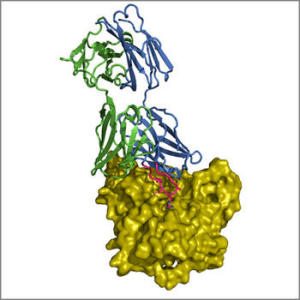 Banging you head against the wall is not to be recommended because it sort of hurts. Yet the woodpecker does it every day and seems content and happy. Woodpeckers are able to peck at a tree trunk at a high speed (6-7 meters per second), resulting in intense deceleration forces upon impact, without sustaining any brain injury. Why precisely this can be done without injury was investigated by Yubo Fan of Beihang University in Beijing and Ming Zhang of Hong Kong Polytechnic University. The results may lead to better ways to prevent head injuries in humans.
Banging you head against the wall is not to be recommended because it sort of hurts. Yet the woodpecker does it every day and seems content and happy. Woodpeckers are able to peck at a tree trunk at a high speed (6-7 meters per second), resulting in intense deceleration forces upon impact, without sustaining any brain injury. Why precisely this can be done without injury was investigated by Yubo Fan of Beihang University in Beijing and Ming Zhang of Hong Kong Polytechnic University. The results may lead to better ways to prevent head injuries in humans.
The woodpeckers, piculets and wrynecks are a family, Picidae, of near-passerine birds. Members of this family are found worldwide, except for Australia and New Zealand, Madagascar, and the extreme polar regions. Most species live in forests or woodland habitats, although a few species are known to live in treeless areas such as rocky hillsides and deserts.
It is still not known how woodpeckers protect their brain from impact injury. In order to investigate this, two synchronous high-speed video systems were used to observe the pecking process, and the force sensor was used to measure the peck force.
The mechanical properties and macro/micro morphological structure in woodpecker’s head were investigated using a mechanical testing system and micro-CT scanning. Models of the woodpecker’s head were established to study the dynamic intracranial responses. The result showed that macro/micro morphology of cranial bone and beak can be recognized as a major contributor to non-impact-injuries. The results showed that specific details of the cranial bones and beak, such as the relative “spongy”-ness of the bone at different places in the skull and the unequal lengths of the upper and lower parts of the beak, were crucial for preventing impact injuries.
By study of the woodpecker better means to protect human heads may be devised such as better hard hats, biker helmets and similar.
Source : www.plosone.org




































